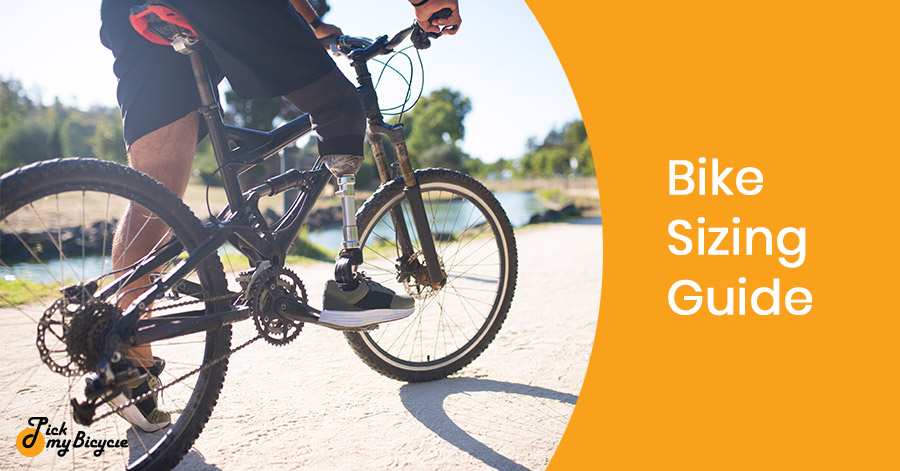How to Choose the Right Bike Size?
Bike riding would not be fun if you ride an uncomfortable bike. You might get an injury from being too stretched out or too cramped while sitting. But knowing the right size can help you enjoy your bike ride to the core. How do you find the right bike? Frame shape, size, bike height, and seating height, are all the factors that determine the right bike size.
In this article, we will explain the standard bike measurements to help you understand the right fit be it an electric bike, road bike, or hybrid bike. Let’s dive into the article and learn more about them in detail.
How Are Bikes Measured?
Bikes are typically measured using centimeters. Generally, a frame size equals a seat tube. For example, if a frame is measured at 50 cm, it will have a seat tube with a 50 cm measurement. An important part of choosing a bike size is your height. Frames are an important part of a bike that decides the overall sizing of your bike. The longer the frame, the longer it accommodates such as longer limbs, arms, head tube, top tube, seat tube, and all go longer as the frame size goes up.
1. Measure your Height

You must measure both your height and the inside leg in order to find the right size of the bike. To calculate your height, stand straight against the wall and draw a line at the top of your head. Then, using a measuring tape scale up from the ground to the mark to get your height. To find the inside leg measurement, lean against the wall and place a book between your legs and inside your groin. Then, scale from the book to the ground to get the inside leg measurement. It would be better if have someone near you to assist you with taking measurements.
Consider the following measurements a reference before choosing your bike. Your height and bike size are mentioned below. The following measurements might vary depending on the different manufacturers.
- 4’11 - 5’3 = 13 - 15 inches
- 5’3” - 5’7” = 15 - 16 inches
- 5’7” - 5’11” = 16 - 17 inches
- 6’0” - 6’2” = 17 - 19 inches
- 6’2” - 6’4” = 19 - 21 inches
- 6’4” and more - 21+ inches
2. Manufacturer's Size Recommendations
Using the recommendations bicycle manufacturers normally provide, which is the simplest approach to choosing the right size bicycle for you. All types of bikes are measured under the same method. There are no universal sizes among bicycle manufacturers. It is always helpful to have an overall understanding of the bike geometry. Don’t think that a model will fit the same as another just because the advertised size appears to be the same because how one manufacturer measures its bike may differ greatly from another.
Most manufacturers measure a bike by its seat tube length whereas a mountain bike is measured with S, M, and L. If you are going to buy your bike online, you must choose the right fit. Based on your height and other measurements, many sites will suggest a bike according to your preferences.
3. Bicycle Frame

Image source:https://averagejoecyclist.co
The first step is to learn the measurements of different elements of a bike given by the manufacturers. Know the different types of tubes used in bicycle making to learn the sizing. The bike’s top tube length is important for the bike’s fit.
A. Frame Geometries
When buying your bike, consider these frame geometries; traditional, compact, and semi-compact.
- Traditional cycle frame - In a traditional bicycle frame, the top tube is parallel to the ground. When you are standing over the bike, the space is reduced so the sizing can be hard. They used to be famous before, but now compact and semi-compact frames rule the latest bikes.
- Compact frames - The compact frame’s top tube is sloping and has a shorter wheelbase. You get more standing clearance in this type of bike frame than in a traditional one. It provides you with a more responsive and comfortable ride.
- Semi-compact frames - Semi-compact frames are similar to compact frames the only difference is the sloping angle is not as great as the compact ones. The standing clearance is also reduced to fewer levels down and the top tube is a bit longer.
B. Top tube length
One of the important considerations you need to make is the top tube length. If it is too long, you need to overreach for the handlebars. If it is too short, your knee might hit on the handlebars. That could make your trip uncomfortable if you are going on a longer ride. So choose the one that is the average length for your ride to be effective.
4. Other Factors to Consider

- Seat height - The correct saddle height is important for riding comfort, efficient performance, and avoiding injuries.
- Handlebar height - Proper handlebar height is essential to maintain correct elbow bend for front traction without being too forward or too far back.
- Stem length, width, and shape decide the bike’s geometry. It connects the front steering to the handlebars. It is important for your bike handling and riding position.
Conclusion
A bike that fits is significantly important as it decides how comfortable you get in your ride. A bike that is too unfit might give you muscle cramps or a bad riding experience for life. The frame size is just one of the important factors. Other than that, the seat height, handlebar height, stem length, width, and shape determine a good bike fit and make your riding experience better. Hope this article helped you in knowing how to measure your bike and get an amazing fit bike for you. Write to us if you have any questions and we will be happy to answer them.

